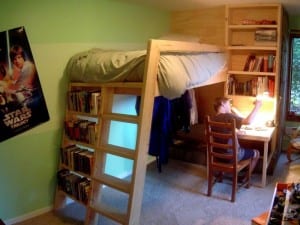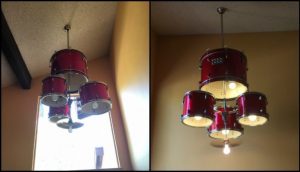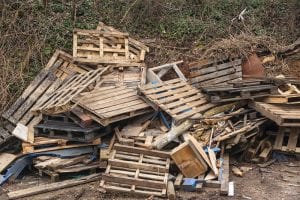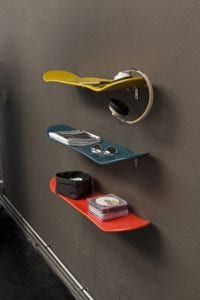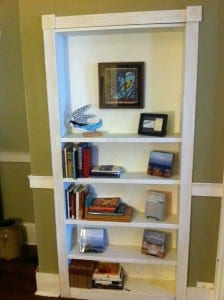Last Updated on February 2, 2024 by teamobn
You’ll appreciate this DIY barbecue grill table if you love having backyard parties. It’s the perfect addition to any outdoor space and will surely make your next party a hit. Plus, it’s relatively easy to build, so you can do it yourself quickly.
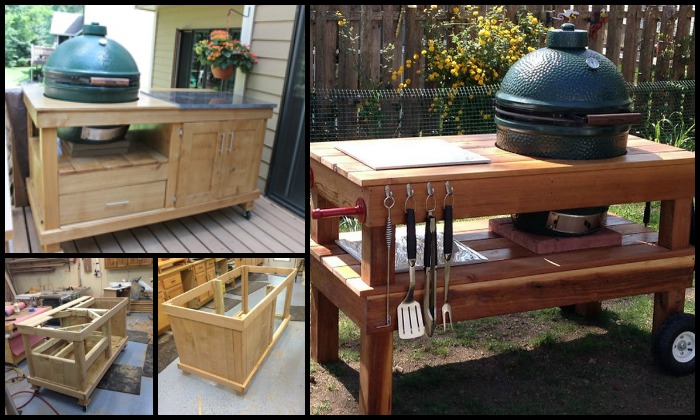
Barbecue parties are fun, but they’re even more enjoyable when you have a comfortable, functional work area to cook in. By taking a few simple steps to set up your barbecue area properly, you can make the whole experience more enjoyable for everyone involved.
Make sure you have enough space to work in. You’ll need room to set up your grill, prep your food, and move around comfortably. If you’re cramped for space, it will make the whole experience more stressful.
Then, invest in some good-quality barbecue tools. This will make the cooking process much easier and more enjoyable. There’s nothing worse than trying to cook with sub-par tools. If you need a movable option for your barbecue needs, this grill table is a great choice.
It’s designed specifically for a Big Green Egg grill, so you know this grill table will be a perfect fit. Plus, the wheels make it easy to move around, so you can take it wherever you need to go.
But since this is a DIY grill table, you can adjust your measurements to fit a Weber grill if that is what you already have. 🙂
Contents
- 1 Building a DIY Barbecue Grill Table
- 2 Choosing the Right Materials for Your DIY Barbecue Grill Table
- 3 Maintaining Your DIY Barbecue Grill Table
- 4 FAQ on DIY Barbecue Grill Table
- 4.1 What materials are best for a DIY barbecue grill table?
- 4.2 How do I protect my DIY barbecue grill table from the elements?
- 4.3 Can I customize my DIY barbecue grill table to fit any grill size?
- 4.4 What tools will I need to build a DIY barbecue grill table?
- 4.5 Is it expensive to build a DIY barbecue grill table?
- 4.6 How often should I maintain my DIY barbecue grill table?
- 4.7 Can I add storage to my DIY barbecue grill table?
- 5 Conclusion
Building a DIY Barbecue Grill Table
Materials
- Oak, Cedar, Teak, or Cyprus Timber
- 2×4 Pressure Treated Timber
- Oak Groove Boards
- Corrosion Resistant Fasteners
- Stainless Steel or Brass Hinges and Drawer Pulls
- Construction Adhesive
- Exterior Grade Finish
- Large Heavy-duty Wheel Casters
Tools:
- Table Saw
- Measuring Tape
- Cordless Drill
- Oscillating Multi-tool
Steps:
Step 1: Planning and Design
- Measure Your Grill: Determine the diameter and height of your grill to ensure the table fits your specific model.
- Sketch Your Design: Draw a detailed plan, including dimensions for the table top, storage, and space for the grill.
Step 2: Cutting the Timber
- Cut the Frame: Use the table saw to cut the 2×4 pressure-treated timber for the frame. Follow your design dimensions.
- Prepare the Top and Shelves: Cut the Oak, Cedar, Teak, or Cyprus timber and Oak Groove Boards to size for the top and shelves.
Step 3: Assembling the Frame
- Lay Out the Frame: Arrange the 2×4 pieces on a flat surface according to your design.
- Secure the Frame: Use the cordless drill and corrosion-resistant fasteners to connect the frame pieces. Apply construction adhesive for extra strength.
Step 4: Attaching the Top and Shelves
- Attach the Top: Place the top timber or boards on the frame. Secure them with fasteners and adhesive.
- Install Shelves: Fit the shelves within the frame and secure them.
Step 5: Making Space for the Grill
- Mark the Grill Space: Use the measuring tape to mark the area where the grill will sit.
- Cut the Opening: Use the oscillating multi-tool to cut out the space for the grill. Ensure there’s enough clearance around the grill for safety.
Step 6: Adding Mobility and Storage
- Install Wheel Casters: Attach heavy-duty wheel casters to the bottom of the table legs for mobility.
- Add Hinges and Drawer Pulls: Install stainless steel or brass hinges and drawer pulls to any doors or drawers for storage.
Step 7: Finishing Touches
- Sand the Table: Smooth all surfaces with sandpaper.
- Apply Finish: An exterior grade finish protects the wood from the elements and heat.
Step 8: Final Assembly
- Place the Grill: Once the finish is dry, position your grill in the designated space.
- Organize Your Tools: Use the storage spaces to organize your barbecue tools and accessories.
Click on any image to start the lightbox display. Use your Esc key to close the lightbox.![]()
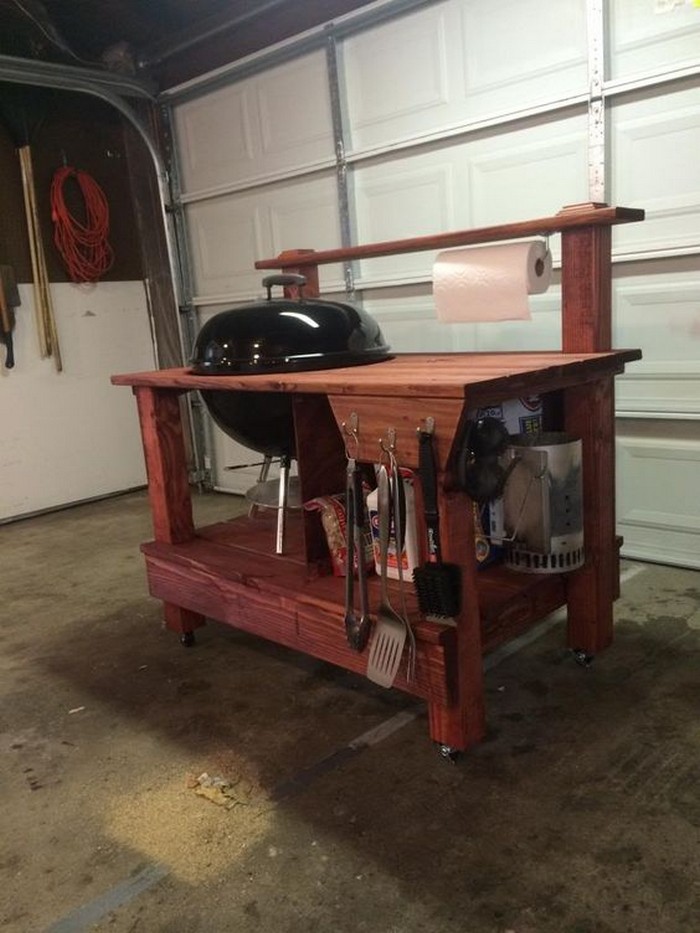

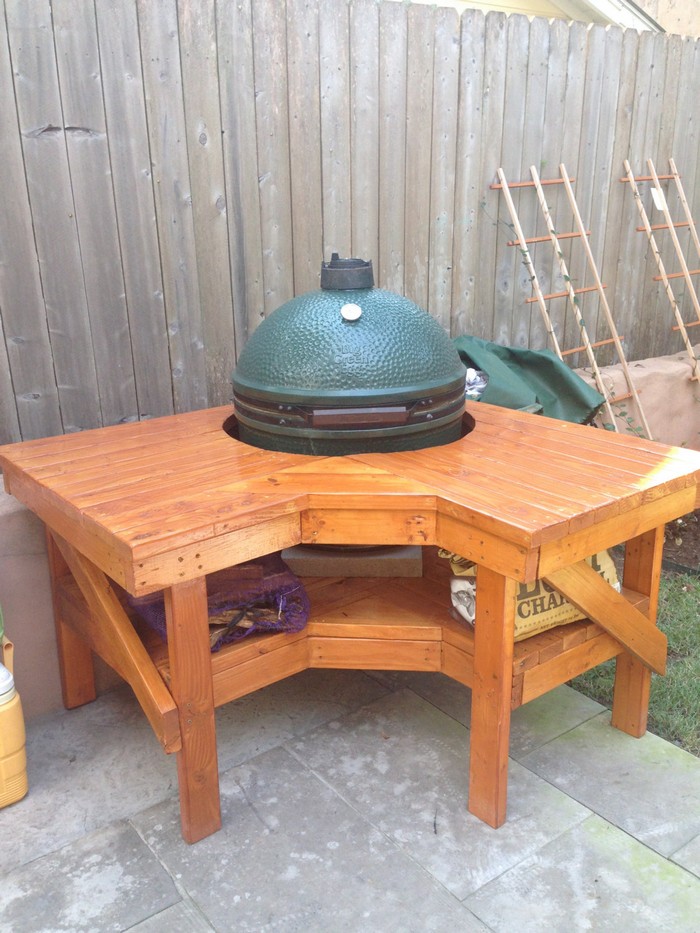
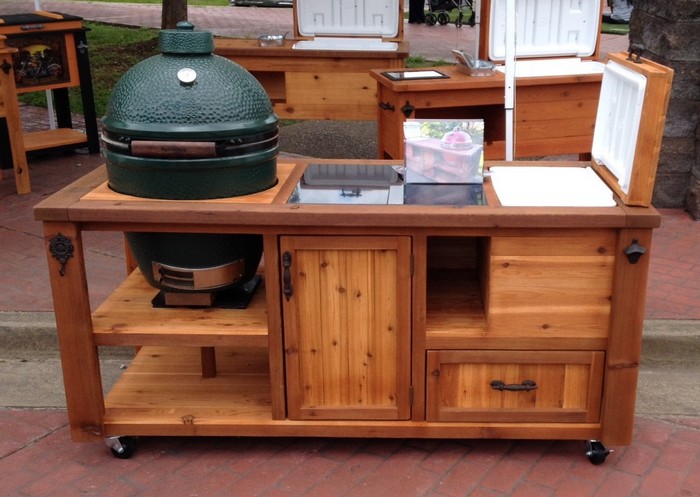
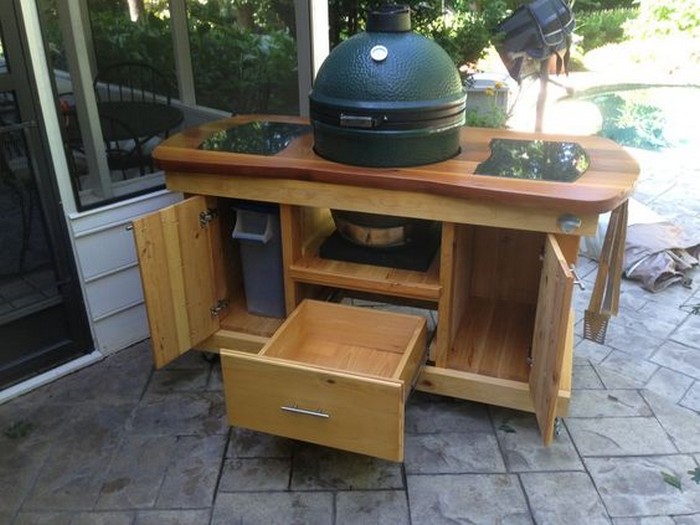
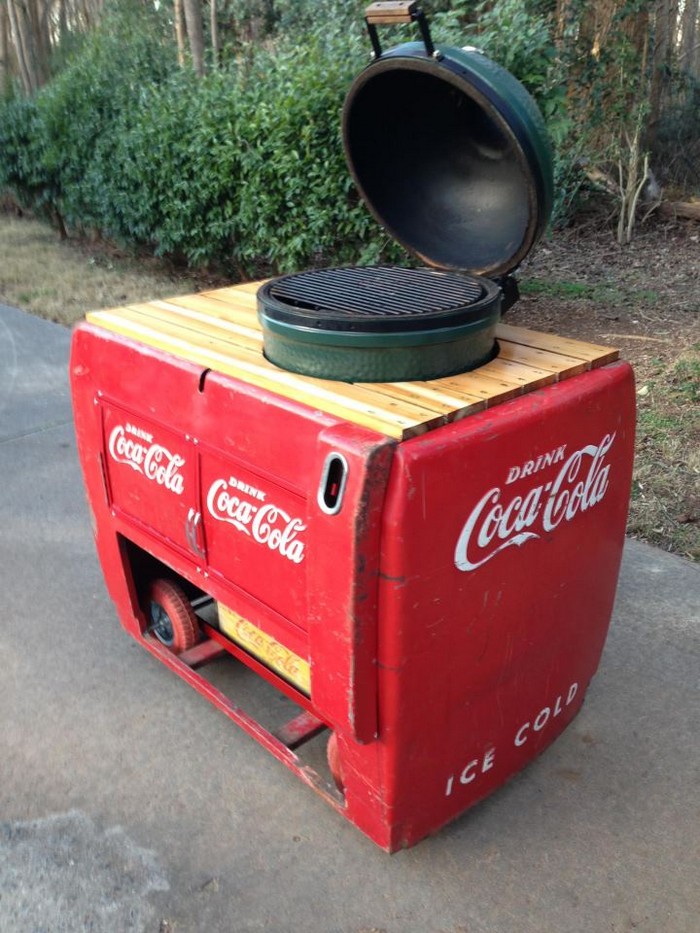

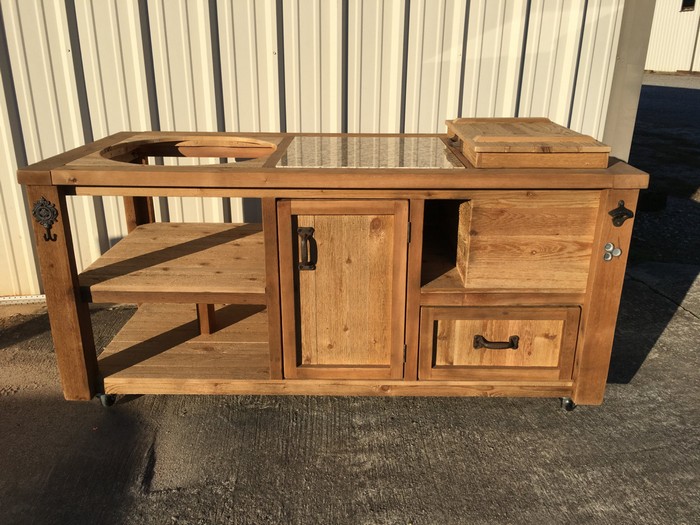
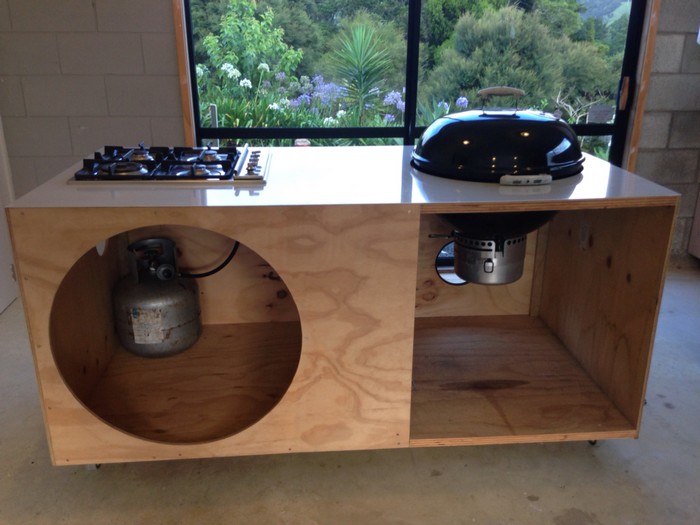
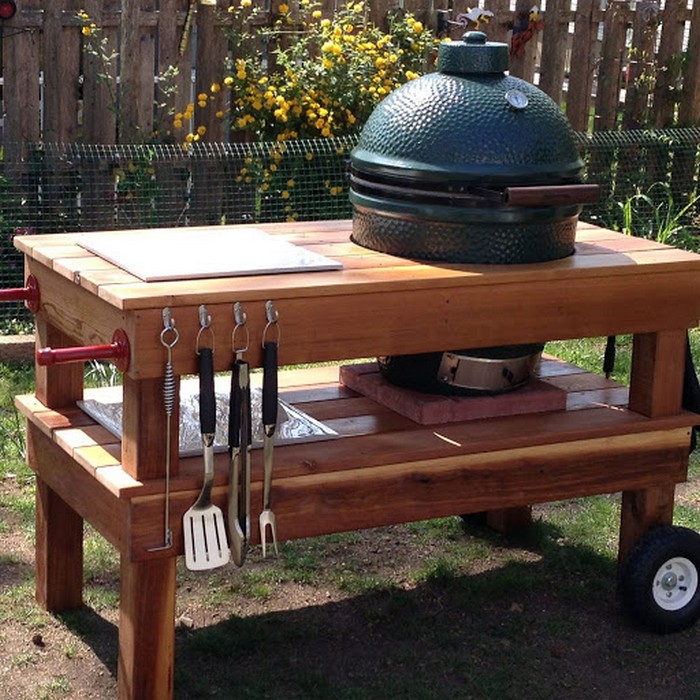
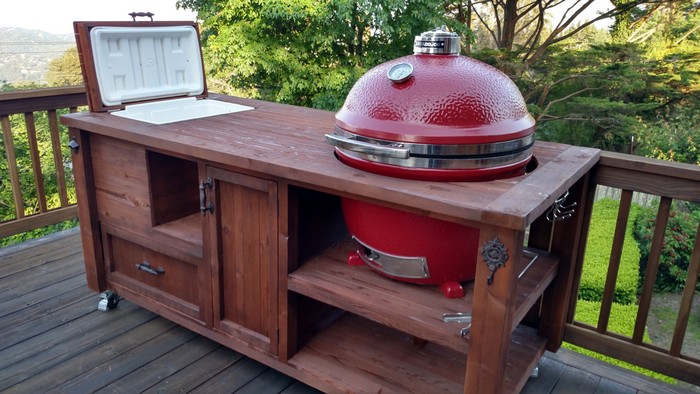
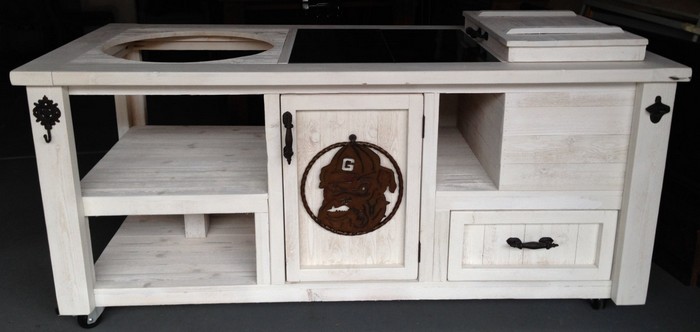
Choosing the Right Materials for Your DIY Barbecue Grill Table
Choosing the right materials for your DIY barbecue grill table is crucial for durability and aesthetics. The materials you select will determine how well your grill table matches the elements and the heat from your grill. Here’s a guide to help you pick the best materials for your DIY project, keeping the focus keyword in mind throughout.
Durability and Weather Resistance
When constructing a DIY barbecue grill table that lasts, selecting materials that can brave the elements is key. Durability and weather resistance are paramount to ensure your table withstands varying climates without deteriorating. Among the top choices, Oak, Cedar, Teak, and Cyprus Timber stand out for their robustness and natural defenses against decay and pests.
Cedar and Teak are especially renowned for their moisture resistance. This quality is crucial for outdoor furniture, as it prevents the wood from warping, swelling, or cracking, which can occur with frequent exposure to rain or humidity. With its aromatic scent, Cedar adds a layer of insect repellence, contributing to its longevity outdoors.
Teak sets the gold standard for durability and weather resistance in outdoor furniture materials. Its dense grain and natural oils repel water and prevent the wood from drying out, cracking, or becoming brittle over time. This makes Teak an unparalleled choice for any outdoor setting, not just for its strength but also for its ability to maintain its appearance under sun exposure, resisting fading and aging gracefully.
The trade-off for Teak’s exceptional qualities is its cost. As the most durable and weather-resistant option, it also comes with a higher price tag than Cedar, Cyprus, or Oak. Nevertheless, the investment in Teak for a DIY barbecue grill table can be justified by its longevity, reducing the need for replacements or extensive maintenance.
For those considering alternatives, Oak and Cyprus offer their own set of advantages. Oak’s dense structure gives it a sturdy foundation, suitable for supporting heavy grills and cooking equipment. Cyprus, while less known, provides a good balance of durability and cost-effectiveness, with a natural resistance to rot that makes it a viable option for outdoor furniture.
Heat Resistance
Heat resistance is a critical factor when building a DIY barbecue grill table, as the material needs to withstand not just occasional bursts of high temperatures but also prolonged exposure to heat. This requirement narrows down the suitable materials, with Teak and Cyprus standing out for their exceptional heat-resistant properties.
Teak, renowned for its durability and weather resistance, also handles heat. Its dense grain and natural oil content not only repel water but also insulate it against heat, preventing damage or degradation from the grill’s warmth. This makes Teak an ideal choice for the surface and structure close to the heat source, ensuring the table remains intact and functional over many barbecue sessions.
Cyprus offers similar benefits. While it may not have the same oil content as Teak, its natural composition provides a good level of heat resistance. This quality is particularly useful in preventing the warping or splitting that can occur when less resilient woods are exposed to heat over time. As a result, Cyprus is a practical and cost-effective option for those looking to balance functionality and budget in their DIY project.
To enhance the heat resistance of your barbecue grill table and ensure the longevity of the wood, incorporating a heat shield or a metal insert around the grill area is a smart strategy. This addition acts as a barrier, reflecting heat away from the wood and dispersing it evenly, which minimizes the risk of heat damage. Materials such as aluminum or stainless steel are excellent choices for this purpose, as they withstand high temperatures well and can be easily integrated into the table’s design.
Moreover, the placement of a heat shield or metal insert serves a functional purpose and adds an aesthetic element to the table. With careful planning and design, these components can complement the natural beauty of the wood while providing essential protection against the heat.
Aesthetic Appeal
The aesthetic appeal of your DIY barbecue grill table is just as important as its functionality. It should serve its purpose and enhance the beauty of your outdoor living space. The choice of material plays a significant role in defining the table’s overall look and feel, each offering unique characteristics that can complement different styles and preferences.
Oak is renowned for its classic beauty, with a distinct and pronounced grain pattern. This hardwood’s natural texture adds a touch of elegance and warmth to any outdoor setting, making it a perfect choice for those who appreciate traditional designs. Over time, Oak develops a deeper patina that enriches its appearance, ensuring that your grill table remains timeless in your backyard.
Conversely, Cedar brings a rustic charm to your barbecue grill table with its rich color and aromatic scent. Its ability to age gracefully, developing a silver-grey patina, adds character and a sense of natural beauty to your outdoor space. Cedar’s appealing texture and color variation make it an excellent choice for creating a cozy and inviting atmosphere for backyard gatherings.
Teak offers a more refined and sophisticated look with its golden-brown color and smooth finish. Its high oil content contributes to its durability and resistance to the elements and gives it a natural sheen that enhances its aesthetic appeal. Teak’s elegance and longevity make it a premium choice for those looking to invest in a high-quality, stylish grill table that will complement modern and traditional outdoor decors.
Cyprus provides a budget-friendly alternative without compromising on style. It features a lighter hue and a subtle grain pattern, offering a simple yet attractive aesthetic that can fit seamlessly into various outdoor themes. Cyprus’s versatility and pleasing appearance make it a great option for DIY enthusiasts looking to balance cost, durability, and beauty.
Cost Considerations
Cost considerations play a significant role in decision-making when tackling a DIY barbecue grill table project. It’s essential to balance your budget with the need for durable, high-quality materials that will stand the test of time.
Cedar and Cyprus offer more budget-friendly options without compromising quality or aesthetics. These materials are generally less expensive than Teak, making them accessible choices for DIYers looking to manage costs while still creating a functional and attractive outdoor piece.
Oak represents a middle ground in terms of cost. It’s more expensive than Cedar and Cyprus but less costly than Teak. Oak’s durability and classic beauty make it a worthwhile investment for those who can stretch their budget further. Its resilience and timeless appeal ensure that your grill table will remain a centerpiece in your outdoor space for years, providing value over time.
Teak, although the most expensive option among these materials, is unparalleled in durability, weather resistance, and aesthetic appeal. Its long lifespan and minimal maintenance requirements can make it a cost-effective choice in the long run. Investing in Teak might have a higher upfront cost, but its ability to withstand the elements with little to no degradation means fewer replacements or repairs.
Choosing the cheapest option might be tempting, especially when working within a tight budget. However, the initial savings could lead to higher costs if the material doesn’t hold up well against wear, weather, and the heat from the grill. Frequent repairs, maintenance, or even a full replacement can significantly increase the overall cost of your grill table project.
Maintaining Your DIY Barbecue Grill Table
Maintaining your DIY barbecue grill table is crucial for ensuring it remains a central part of your outdoor entertainment for years. Proper care and upkeep will protect your investment and keep it looking as good as the day you built it. Here’s how you can maintain your grill table with a focus on durability and aesthetics.
Regular Cleaning
Regular cleaning is essential to keep your DIY barbecue grill table in top condition. After every barbecue session, wiping down the table to remove grease, spills, and food particles will help preserve the wood’s integrity and appearance.
Using a mild detergent mixed with water is usually sufficient for this task. Ensuring the table is completely dry after cleaning will prevent moisture retention, which can lead to wood warping or swelling.
Protective Finishing
Applying a protective finish to your DIY barbecue grill table is a key step in maintenance. An exterior grade finish will shield the wood from harmful UV rays and moisture, which is critical for outdoor furniture. This treatment should ideally be reapplied annually, especially if the table is made from popular materials like Cedar, Oak, Teak, or Cyprus. These finishes not only extend the life of your table but also enhance its natural beauty.
Weatherproofing
Protecting your DIY barbecue grill table from the elements when not used can significantly extend its lifespan. A waterproof cover is ideal for guarding against rain, snow, and the sun’s harsh rays. This simple step can prevent premature aging of the wood and keep your table looking new for longer.
Repair and Replacement
Regular inspections of your DIY barbecue grill table can catch minor issues before they become major problems. Look out for loose screws, signs of wear, or any rust on metal components. Addressing these issues promptly, such as tightening screws, replacing worn parts, and treating rust, will ensure the table remains sturdy and functional.
Seasonal Storage
If you have the space, storing your DIY barbecue grill table in a garage, shed, or under a canopy during the off-season can protect it from extreme weather and temperature fluctuations. This precaution can prevent cracking, warping, or other damage caused by harsh winter conditions or the scorching summer sun.
By adhering to these maintenance tips, your DIY barbecue grill table will continue to be a highlight of your backyard parties. Regular care keeps the table looking its best and ensures it is always ready for your next outdoor gathering.
FAQ on DIY Barbecue Grill Table
What materials are best for a DIY barbecue grill table?
The best DIY barbecue grill table materials include durable and weather-resistant woods such as Oak, Cedar, Teak, and Cyprus Timber. These materials are chosen for their natural resistance to decay, insects, and ability to withstand outdoor conditions.
How do I protect my DIY barbecue grill table from the elements?
Protect your DIY barbecue grill table with an exterior grade finish to shield the wood from moisture and UV damage. Additionally, using a waterproof cover when the table is not in use can help protect it from rain, snow, and sun.
Can I customize my DIY barbecue grill table to fit any grill size?
You can customize your DIY barbecue grill table to fit any size. Measure your grill carefully before starting your project to ensure the table accommodates your specific grill dimensions.
What tools will I need to build a DIY barbecue grill table?
You will need tools such as a table saw, measuring tape, cordless drill, and an oscillating multi-tool to build a DIY barbecue grill table. These tools will help you cut, assemble, and finish your grill table accurately.
Is it expensive to build a DIY barbecue grill table?
The cost of building a DIY barbecue grill table can vary based on your chosen materials. Cedar and Cyprus are more affordable options, while Teak is more expensive but offers greater durability and weather resistance. Oak falls in the middle range in terms of cost.
How often should I maintain my DIY barbecue grill table?
Regular maintenance, including cleaning and reapplying protective finishes, should be done annually to keep your DIY barbecue grill table in the best condition. Inspect your table regularly for any signs of wear or damage and address them promptly.
Can I add storage to my DIY barbecue grill table?
Adding storage to your DIY barbecue grill table is a great way to keep grilling tools and accessories organized and within reach. Consider designing your table with built-in shelves or drawers for convenient storage.
Conclusion
Creating a DIY barbecue grill table is filled with benefits that extend far beyond just a place to grill. This project adds a functional piece to your outdoor space and brings a sense of accomplishment and customization. Anyone can build a grill table tailored to their space and style preferences with materials like Oak, Cedar, Teak, or Cyprus.
To build the best outdoor kitchen bar, check out our design tips next!

